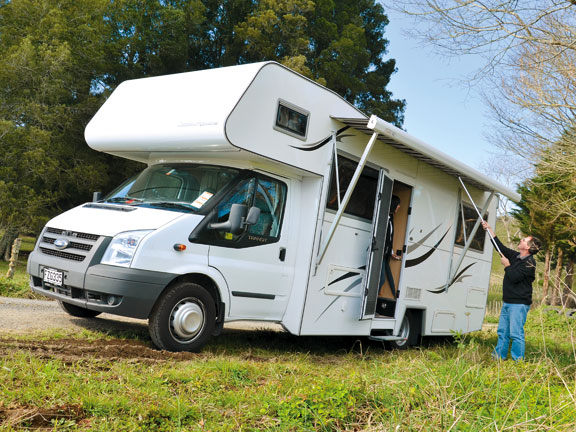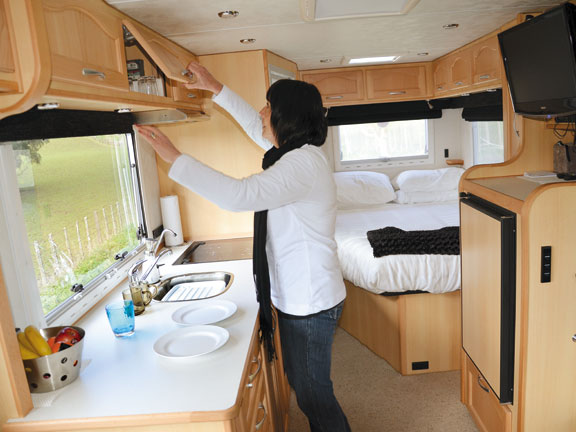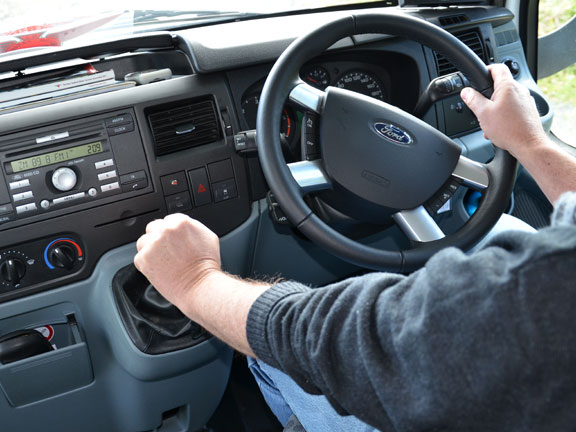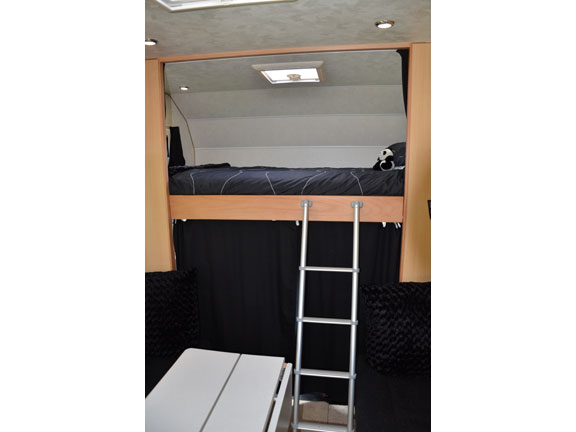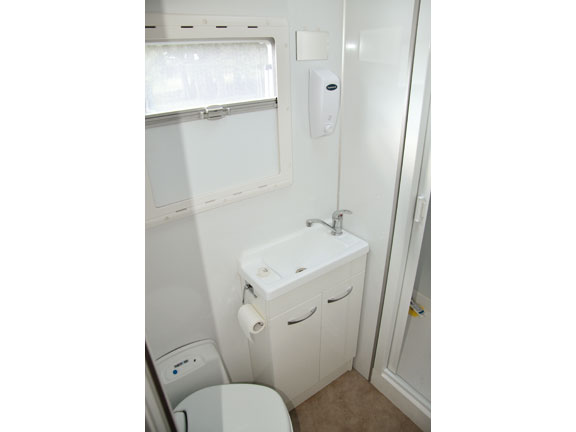- Expansive work surfaces in kitchen
- Diesel heater ducted through bathroom is effective and convenient
- Cvana awning deploys in seconds
- Heaps of power from turbo engine
- Permanent fittings mean no disassembling required
The Transit is the Hawera couple’s fifth motorhome in seven years. The previous four were just not was ideal for a couple, who prefer to follow the road less travelled.
And for that kind of touring, they wanted a particular kind of motorhome. So they had one built.
“We hesitate to call ourselves freedom campers,” says Steve, “because of the somewhat negative connotations that terms has taken on in recent months. But we enjoy the remote, isolated spots, and we are very responsible campers. And our motorhome is supremely self-contained – we designed it to be able to take off for weeks at a time without having to pull in for servicing.”
They designed the layout themselves, and took their sketches to Hamilton’s Boothy’s Diamond Motorhomes.
“The Boothy’s team was brilliant – great workmanship, very helpful, full of excellent suggestions – a pleasure to work with.”
They first had to select the basic vehicle – though for Steve it was a no-brainer. He’s a truck driver by profession, and a Ford fanatic.
“A couple of factors dictated the Transit as the base vehicle. We were adamant about the convenience of a walk-through between the cab seats – so that meant a van rather than a truck. I insisted on a manual, six-speed gearbox – I feel it gives me more control.”
Furthermore, he wanted a rear-wheel drive vehicle, with double rear wheels for added stability.
The 7m Transit checked out on all these requirements – and it satisfied all of Steve’s truckie instincts.
“The 2.4-litre turbo-charged diesel engine has heaps of power [140hp] and she cruises effortlessly at 100km/h. Disc brakes all round provide excellent stopping action, and the cab is comfortable and well laid-out. What more can I say? It’s a Ford, after all.”
For Boothy’s though, the project presented new territory – the team had never built a home on a Transit chassis before.
Layout
The couple’s sketches contained specific requirements – including a “permanent” layout. Rather than having to deploy beds or tables, they opted for fixed fittings – nothing is disassembled.
The layout is also the first (for them) with the north-south double berth at the rear of the vehicle. The lounge, with its permanent table, is up front, just behind the cab.
They added a second, east-west double berth over the cab. The bench seats (1.5m long) either side of the lounge table can also sleep two children, effectively giving the motorhome a “4+2” sleeping accommodation.
Wendy added a number of requests to the design brief: “I enjoy cooking and wanted an extra-large workbench in the kitchen with loads of storage space, as well as an oven. The oven’s a first for us, and I can’t imagine how we survived without one before. Nothing beats hot, fresh muffins first thing in the morning!”
Another first for them was the diesel heater – a vital piece of equipment given that they travel all year round.
“It’s flued through the bathroom, creating a very toasty environment and a perfect drying room for damp clothes. We’ve tried all sorts of heaters, and this is easily the most effective and convenient.”
The heater draws its fuel from the main tank. Steve isn’t sure how much it uses, but says it’s negligible. Double-glazed windows, thermal blinds, thick carpeting and plenty of polystyrene insulation help to retain the heat.
Boothy’s use of solid cherrywood cabinetry adds cosiness and warmth. The company’s preference for using solid timber joinery appealed to the couple.
“We definitely didn’t want a MDF/melamine structure,” says Steve. “Our motorhome is perhaps a little heavier than similar-sized vehicles [it weighs 4.1 tonnes fully loaded] because of the timber construction, but it’s solid. No squeaks or rattles – and definitely no seams that open as you go over a bump!”
Their self-containment rule dictated extra “range” for the toilet. They have two 18-litre cassettes, and the spare lives in a special locker created by Boothy’s. The home carries 200 litres of water and has a 200-litre grey water tank.
Electrics
Long-range touring without ready access to 240-volt AC for charging also places heavy demands on the motorhome’s power infrastructure. Catering for that are four six-volt, deep-cycle batteries connected in series (440-amp hours), charged by the Transit’s heavy-duty alternator and a 1400-watt solar panel on the roof. The van has separate 12-volt start batteries.
They’ve fitted LED lamps throughout to conserve electricity.
The Transit is wired for a 240-volt AC hook-up, but they rarely use it. And while they’ve used inverters before, they’ve elected to go without one.
“We fitted an 1800-watt inverter to our previous motorhome, but only ever used it for a vacuum cleaner and a hairdryer,” says Steve. “We decided these weren’t essential accessories.”
He uses the Transit’s cigarette lighter outlet for charging the lap-top computer and cell phones.
The best piece of electrical tweaking, says Steve, was the extra pair of speakers above the head of the bed.
“The TV is mounted halfway down the motorhome, and watching from the bed we’d have to turn up the volume significantly to hear it. With the extra speakers, we have the sound right above our heads – at a respectable level.”
Another favourite feature is the Cvana awning bolted to the side of the vehicle.
“We’ve used a number of different awnings on our previous motorhomes, and can categorically report that this is by far the best. It’s deployed in seconds, robustly-constructed and remains secure even in fairly wild conditions.”
The couple have had their new motorhome for four months and have already visited “all four corners of the North Island” in it.
“We absolutely love it – it turned out even better than we expected – Boothy’s has done a great job in turning our dream into reality.”
Specifications
Chassis Ford Transit
Engine 2.4-litre turbo-charged diesel with six-speed manual gearbox
Max hp 103kW @ 3500rpm
Max torque 375Nm @ 2000rpm
Length 7m
Berths 4+2 (two doubles and two singles)


